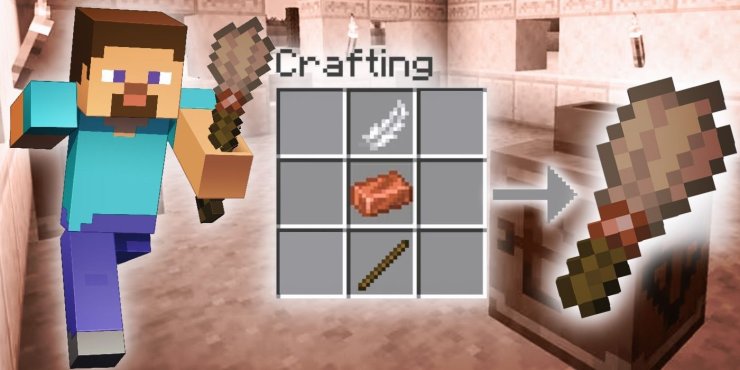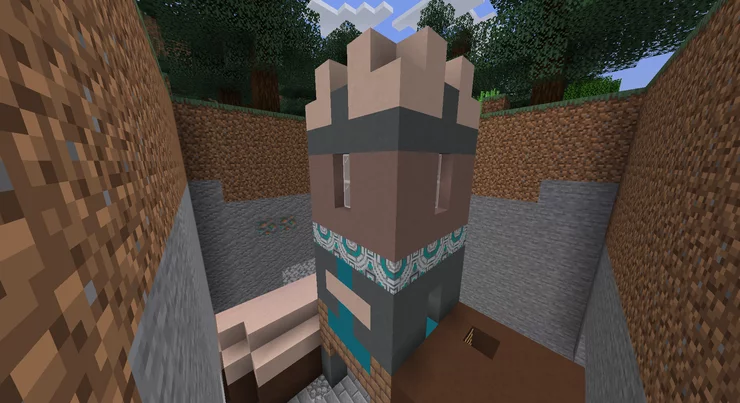How to Find and Use Suspicious Sand

Suspicious sand blocks generate naturally in specific structures, and their distinct texture—marked by cracks and holes—sets them apart from regular sand. In Minecraft 1.21, these blocks appear in the following locations:
- Desert Pyramids: Found in hidden rooms beneath the main structure, often buried under regular sand. These rooms were expanded in 1.20 to include more suspicious sand.
- Desert Wells: Located at the base of desert wells, offering a smaller but accessible source of suspicious sand.
- Warm Ocean Ruins: Scattered among the ruins in warm-temperature ocean biomes, blending with regular sand on the ocean floor.
Suspicious Sand Mechanics
Suspicious sand is fragile and affected by gravity, meaning it will break if it falls from any height or is broken manually, yielding no loot. Even tools enchanted with Silk Touch cannot preserve the block or its contents. However, players can obtain suspicious sand as an item in specific scenarios:
- Allowing it to fall from a height greater than 30 blocks.
- Letting it pass through two vertically stacked cobweb blocks.
- Landing it on an upward-facing bubble column.
In these cases, the block drops as an item but loses its loot, making it unsuitable for archeological purposes unless used in Creative Mode or with commands.

To extract loot, players must use a brush—crafted with a stick, a copper ingot, and a feather. Brushing takes approximately 4.8 seconds (96 game ticks), during which cracks appear on the block’s surface, and an item gradually emerges. Once fully brushed, the suspicious sand transforms into regular sand, and the loot is revealed. If brushing is interrupted, the block remains in a partially excavated state for a few seconds before reverting to its unexcavated form.
Loot from Suspicious Sand in 1.21
The items obtainable from suspicious sand depend on the structure where it generates. The 1.21 update introduces new pottery sherds found in trial chambers, complementing the existing loot tables. Below are the updated loot tables for suspicious sand:
Desert Pyramids
- Archer Pottery Sherd
- Emerald
- Gunpowder
- Miner Pottery Sherd
- Prize Pottery Sherd
- Skull Pottery Sherd
- TNT
- Diamond
Warm Ocean Ruins
- Coal
- Emerald
- Wheat
- Wooden Hoe
- Gold Nugget
- Angler Pottery Sherd
- Shelter Pottery Sherd
- Snort Pottery Sherd
- Sniffer Egg
- Iron Axe
Desert Wells
- Arms Up Pottery Sherd
- Brewer Pottery Sherd
- Brick
- Emerald
- Stick
- Suspicious Stew
Trial Chambers (New in 1.21)
- Flow Pottery Sherd (depicts a breeze)
- Guster Pottery Sherd (depicts a spiral)
- Scrape Pottery Sherd (depicts an axe)
Note: Trial chamber pottery sherds are unique because they are often found already incorporated into decorative pots within the chambers, requiring players to break the pots to obtain them. However, suspicious sand in trial chambers may also yield these sherds when brushed.
How to Find and Use Suspicious Gravel
Suspicious gravel, like its sandy counterpart, is a fragile, gravity-affected block that contains loot revealed through brushing. It generates in different structures and has its own distinct loot tables, updated in 1.21 to include new items tied to the trial chambers and other features.

Suspicious Gravel Mechanics
Suspicious gravel shares the same fragility as suspicious sand. It cannot be mined or collected with Silk Touch, and it breaks without dropping loot if it falls or is manually destroyed. Players can obtain suspicious gravel as an item using the same methods as suspicious sand:
- Falling from a height greater than 30 blocks.
- Passing through two stacked cobweb blocks.
- Landing on an upward-facing bubble column.
As with suspicious sand, the block loses its loot when obtained this way. In Creative Mode or with commands, players can acquire suspicious gravel for decorative or experimental purposes.

Suspicious gravel generates in:
- Cold Ocean Ruins: Found in cold-temperature ocean biomes, often mixed with regular gravel.
- Trail Ruins: Introduced in 1.20, these underground structures are rich in suspicious gravel and offer both common and rare loot tables.
- Trial Chambers (New in 1.21): Suspicious gravel in trial chambers may contain unique items tied to the update’s new features.
Brushing suspicious gravel follows the same process as suspicious sand, transforming the block into regular gravel and revealing its loot after 4.8 seconds.
Loot from Suspicious Gravel in 1.21
Suspicious gravel loot varies by structure and, in the case of trail ruins, is divided into common and rare categories. The 1.21 update adds new armor trims and other items, enhancing the archeology system’s rewards.
Cold Ocean Ruins
- Coal
- Emerald
- Wheat
- Wooden Hoe
- Gold Nugget
- Blade Pottery Sherd
- Explorer Pottery Sherd
- Mourner Pottery Sherd
- Plenty Pottery Sherd
- Iron Axe
Trail Ruins (Rare)
- Burn Pottery Sherd
- Danger Pottery Sherd
- Relic Music Disc
- Friend Pottery Sherd
- Heart Pottery Sherd
- Heartbreak Pottery Sherd
- Host Armor Trim Smithing Template
- Howl Pottery Sherd
- Raiser Armor Trim Smithing Template
- Shaper Armor Trim Smithing Template
- Sheaf Pottery Sherd
- Wayfinder Armor Trim Smithing Template
Trail Ruins (Common)
- Blue Dye
- Brick
- Brown Candle
- Emerald
- Green Candle
- Light Blue Dye
- Orange Dye
- Purple Candle
- Red Candle
- Wheat
- White Dye
- Wooden Hoe
- Yellow Dye
- Beetroot Seeds
- Blue Stained Glass Pane
- Coal
- Dead Bush
- Flower Pot
- Lead
- Light Blue Stained Glass Pane
- Magenta Stained Glass Pane
- Oak Hanging Sign
- Pink Stained Glass Pane
- Purple Stained Glass Pane
- Red Stained Glass Pane
- Spruce Hanging Sign
- String
- Wheat Seeds
- Yellow Stained Glass Pane
- Gold Nugget
Trial Chambers (New in 1.21)
- Flow Armor Trim Smithing Template
- Bolt Armor Trim Smithing Template
Note: Trial chambers introduce new armor trims that can be applied to customize armor, adding to the archeological rewards. These trims are exclusive to suspicious gravel in trial chambers, making them a valuable find.
Tips for Effective Archeology
- Distinguish Suspicious Blocks: Suspicious sand and gravel have grainier textures than their regular counterparts. In 1.21, Mojang added subtle particle effects when near suspicious blocks, making them easier to spot in low-visibility areas like ocean ruins.
- Use a Brush Sparingly: With only 64 uses, craft multiple brushes for extended archeology sessions. Carry feathers, copper ingots, and sticks to craft on the go.
- Protect Suspicious Blocks: Place blocks beneath suspicious sand or gravel to prevent them from falling and breaking. Avoid pistons or explosions near these blocks, as they will destroy the loot.
- Explore Trial Chambers: These new structures in 1.21 offer high-value loot but are guarded by challenging mobs. Bring strong armor and weapons to secure your archeological finds.
- Combine Pottery Sherds: Collect four pottery sherds to craft decorative pots, which now include new designs from trial chambers. These pots can be customized further with the new banner patterns.
>>> Read more: Complete Guide To Use All Village Mechanics In Minecraft










Comments